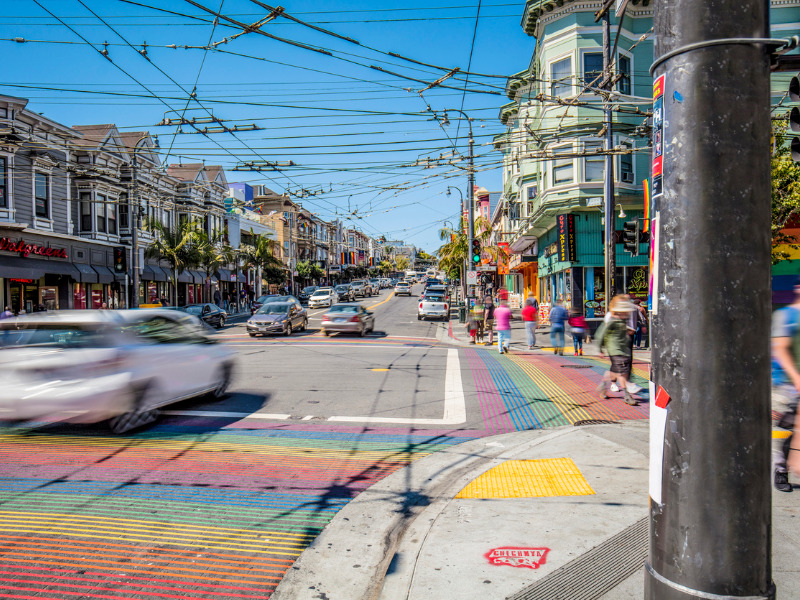Why insurers can appreciate asphalt art

Asphalt art is far from distracting for road users. In fact, it significantly reduces crashes and the rate of “conflict” between pedestrians and vehicles, according to a new study.
A historical crash analysis compared a two-year span of crash data prior to and after the introduction of asphalt art at 17 different study sites. It found a 50% decrease in the rate of crashes involving pedestrians or other vulnerable road users at the asphalt art sites. There was also a 37% decrease in the rate of crashes leading to injuries and a 17% decrease in the total crash rate, says the Asphalt Art Safety Study from Bloomberg Philanthropies.
Asphalt art takes a variety of forms, including intersection murals, crosswalk art, painted plazas and sidewalk extensions.
The historical analysis involved 17 locations and 390 reported crash records in the United States. It found reduced crash rates across the board.
“The trend between presence of asphalt art and reduced crash rates was consistent across sites with a variety of roadway settings, traffic control types, and art improvement type,” the report says. “The results are likely due to the improved conspicuity of the intersection and roadway user movements.”
A second part of the study included an observational behaviour assessment, which compares before and after video footage of motorist and pedestrian behaviour at five U.S. locations where asphalt art projects were installed. “The analysis found significantly improved safety performance across a variety of measures during periods when asphalt art was installed,” the study says.
In particular, there was a 25% decrease in pedestrian crossings involving a conflict with drivers (such as near-miss conflicts between pedestrians and vehicles), a 27% increase in frequency of drivers immediately yielding to pedestrians with the right-of-way, and a 38% decrease of pedestrians crossing against the walk signal.
“When considering all observed movements at observation sites aggregated, the rate of crossings involving a low and high crash potential conflict decreased by 27% and 18%, respectively, an overall decrease of 25%,” the report says.
The report concludes “road user behaviour clearly improved across the observed study sites in the after analysis periods” for both the historical crash analysis and observational behaviour assessment.
The study team recommends a “significant expansion” of the study to include asphalt art sites in a variety of roadway and land use contexts. “This would allow for a more detailed assessment of which elements of projects (the art itself, additional traffic control, roadway, or roadside improvements, etc.) are the most effective, and also take into account other changes that may have taken place after the implementation period (redevelopment, population growth, changes to local bike or transit networks, etc.)
“Last and perhaps most important, this study, with a rigorous analysis of nearly two dozen projects across the [U.S.], provides supporting quantitative data for residents and city officials to use to implement asphalt art projects in their own communities,” the report says. “The study team hopes to encourage more arts-focused transportation projects that contribute to safer city streets across the [U.S.] and around the world.”
Feature image by iStock.com/xavierarnau



